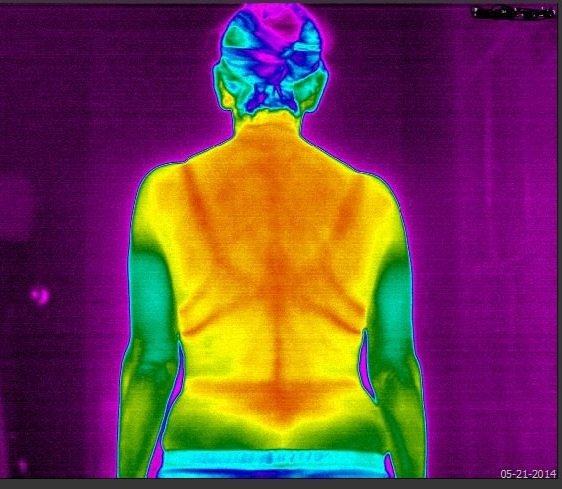An affordable and safe screening solution.
What is thermography?
Thermography is a no contact, radiation-free, state-of-the-art screening procedure that uses heat detection to locate areas of temperature differences in the body. For information about thermography and how it differs from other screening methods as well as how it works with other methods to assist in diagnosis of disease, please visit our corporate site www.btiscan.com . You will find a wealth of information on that site.
FAQ
Does the scan include a consult with a doctor to go over results? YES, at no extra charge. The consult will either occur with the local doctor who referred you to us or with one of the BTI trained doctors over the phone. They will go over the results with you and answer questions that you may have.
How long does it take to receive my results? Typically 7 days or less, though certain times of the year (October being the busiest) can take up to two weeks.
Who reads (interprets) the scans? A team of three doctors manually interpret the scans and create a verbal narrative of what they see. They also include possible issues to watch and a timeline recommendation of when to have your next follow-up scan.
Is it just for females? NO. Though thermography is popular for females for breast screening, it can also be useful for men.
What can I expect? You will fill out a health history intake form online to let us know if there are any issues that you are concerned with and to provide our doctors with relevant information to assist them in interpreting your scans. You will read and follow a list of protocols prior to the scans that will help you receive the most accurate results. When you are in the scan room, you will be behind a curtain. You will undress for 15 minutes to allow your body to acclimate to room temperature so that thermographic readings are not falsely attributed to environmental conditions such as a hot day outside. Once the acclimation period is over the scans take approximately 10 to 30 minutes.
Does insurance cover it? Typically no. However, most HSA and FSA accounts can be used to pay for the service.
Routine Breast Screening
Thermography is an effective, safe, and comfortable adjunctive procedure for screening for breast cancer. Thermography is not a stand-alone diagnostic test, but is a safer and more comfortable way for women to screen for breast cancer more frequently.
Young Women at Risk
An often neglected category is women under 40, as well as women with dense breasts who are unable to be effectively screened with mammography and the current standard of care. Over 20,000 cases of breast cancer have been reported annually in women under the age of 40. This population has been consistently neglected by traditional breast cancer screenings. When cancer strikes younger women, it is typically a more aggressive form and is less likely to respond to treatment. There is currently no other routine screening test for women under 40. Thermography is an ideal test for this age group considering it is a radiation-free screening.



